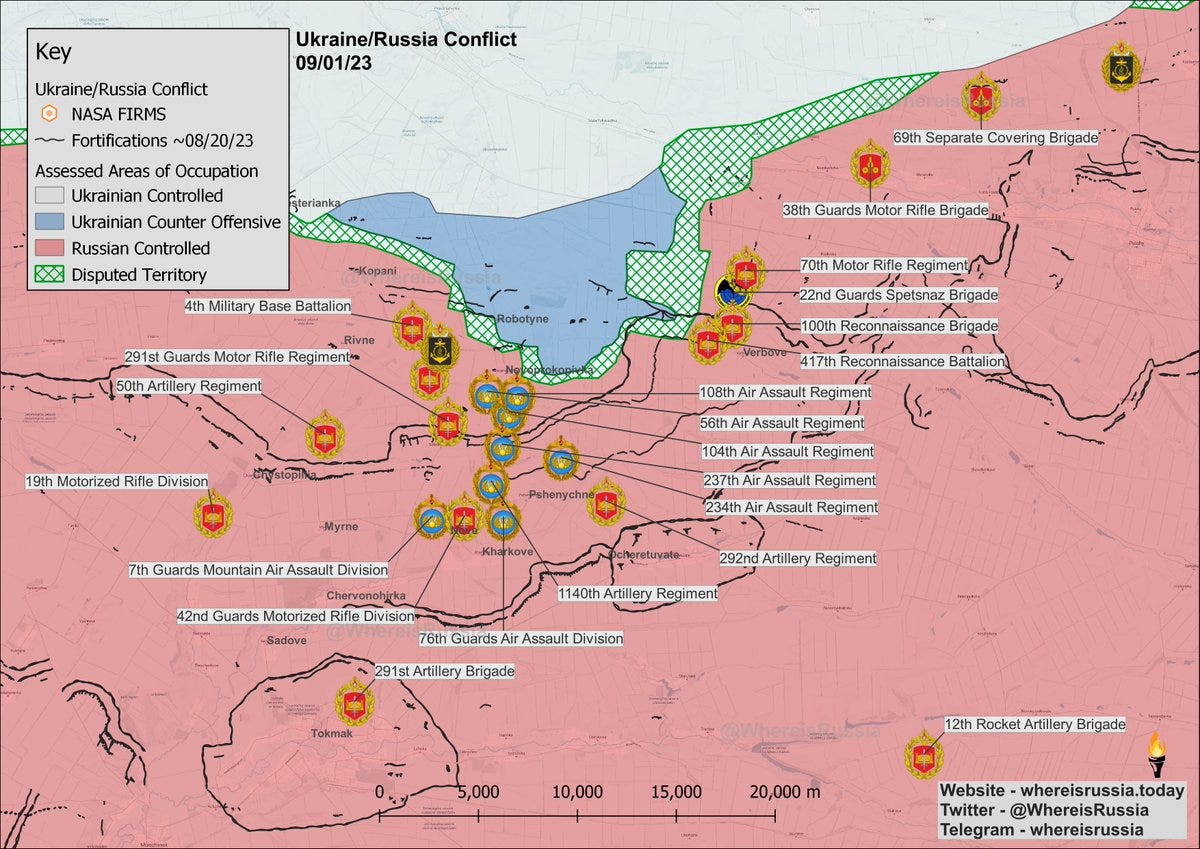Gambler to the last, Valery Gerasimov is all-in. He is defending the Robotyne axis with every last chip, meaning every last body he commands. Russian activity in Luhansk has decreased as forces there get shifted to the Zaporizhzhia front. Without reserves in the oblast, it was necessary to draw them from somewhere if he was to prevent a breakthrough. If…
Keep reading with a 7-day free trial
Subscribe to Polemology Positions to keep reading this post and get 7 days of free access to the full post archives.


